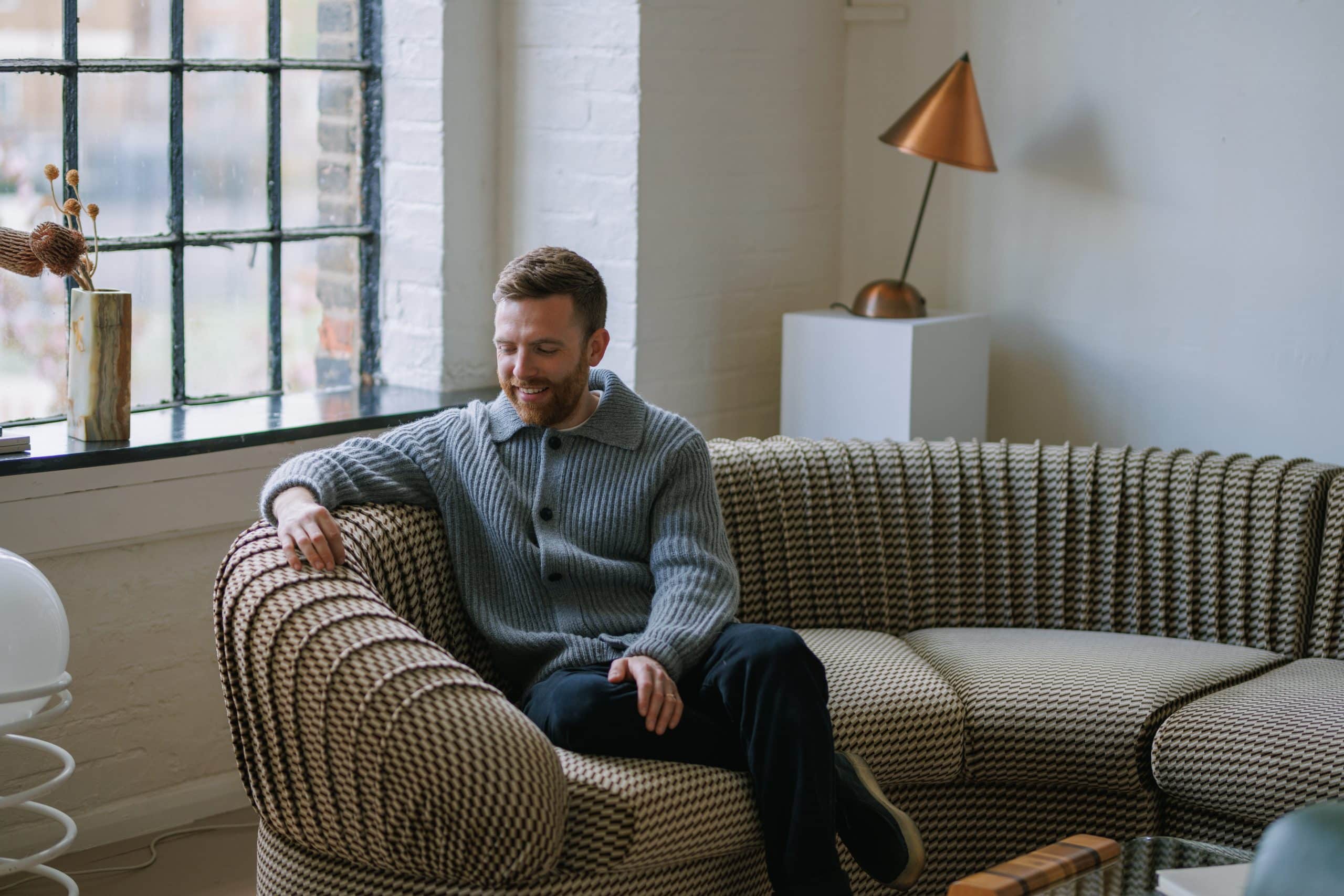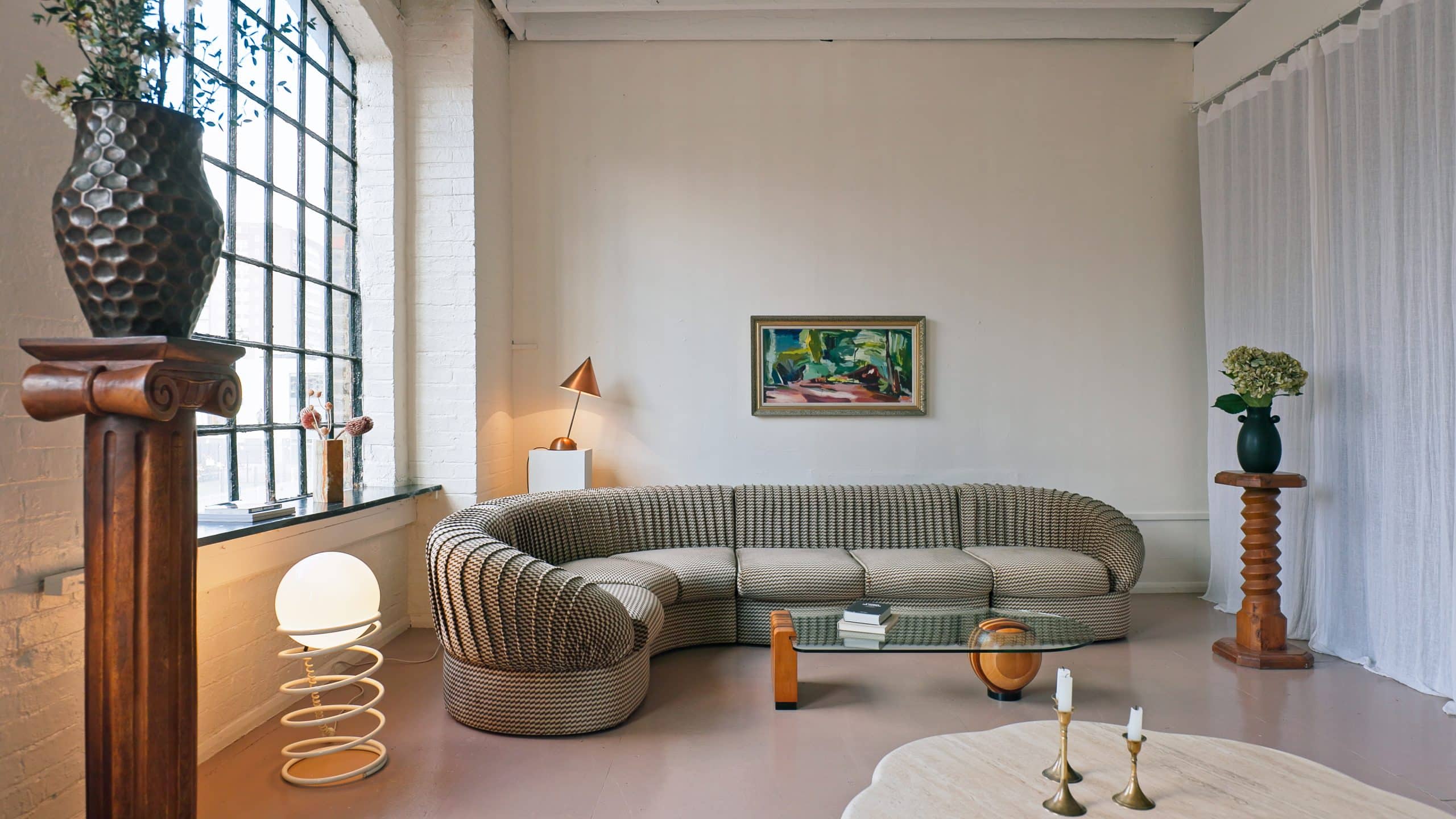INDUSTRY EXPERTISE
Brad Didino Downs
Curated by Brad Didino Downs, Four Quarters’ collaborates with leading restorers, upholsterers and other artisans to respectfully revive rare pieces of design.


Curated by Brad Didino Downs, Four Quarters’ collaborates with leading restorers, upholsterers and other artisans to respectfully revive rare pieces of design.

Ever since I was a child I have been a collector of ‘old things’, whether it be watches, comics, coins or even pens. You name it – I’ve probably had a short-lived obsession with it and squirrelled it away! (My attic full of boxes is a testament to this). However, antiques and specifically furniture is the passion which has really stuck. Around five years ago, my wife and I bought our first home and started purchasing numerous vintage pieces for it. Inevitably many of them didn’t quite work, so I sold a few and realised there was potential to make a business out of it if I could scale up these casual transactions. Fast forward to now, and I am lucky enough to call this my job, spending my days sourcing beautiful objects for my clients.

For me, it’s all about form and texture. I try not to restrict myself to a specific period but rather look for unusual shapes, interesting finishes, pops of colour, beautiful materials and signs of great craftsmanship. That being said, most of my collection dates from the 1960s to the 1990s, so it focuses on modernism. However, I love finding antique pieces that were aesthetically ahead of their time when they were made. My fundamental rule for selecting pieces is, ‘would I have this in my home?’ In my opinion, the home should be about warmth, peace and function. Hence, everything I source needs to uphold and facilitate this. Colours are typically organic, the designs and shapes are normally natural and smooth, and most importantly, everything has to be of exceptional quality, and workable for daily life.

Many of the pieces I source are one-offs or from small production runs, so the authenticity of the producer is less of a concern. The more important thing is making sure it is from the right period and of high quality. There are lots of ways to date something without stamps or references, but one of the easiest ways is by looking at screws; the shape, size and material of the screw are a dead giveaway of the period. Then, the more obvious signs are the types of joints used to construct the piece, which indicates the level of craftsmanship. A great investigative tip I’ve learned is to look for feet protectors. If chairs have feet protectors, it means the flooring was expensive enough that the owners wanted to protect it. This also usually means the furniture from the property is of equal quality and thus from a wealthy household. Many of these principles still apply when authenticating well-known designer pieces too, but really boils down to forensically comparing online imagery against your item. For exceptionally high-value pieces, I would recommend auction house appraisals.

I would say that reproductions take more from our trade than they add. On one hand, recreating vintage designs popularises them, helping them reach a much larger audience. On the other hand, it’s human nature to try and one-up each other. A minority will seek to find the authentic original pieces as a way of separating themselves from ‘the masses’. However, I can’t help but feel that many potential customers might have paid a slightly higher price, but then opt for the cheaper, (both in quality and price), brand-new alternative.

Many interior designers come to me as I have an instinctual understanding of what they want, and my approach and aesthetic naturally align with theirs. Call it perfect harmony! However, I work on lots of projects where the briefs are quite nuanced and the key to this way of working is well-formed mood boards which then springboard my sourcing journey. I work closely with designers whilst building a package for them, searching all around Europe and sending them on-the-ground images of the pieces I find, which gives them a much broader view of what is out there beyond my collection in the UK.

I predominantly source in Europe and sell in the UK, but I am increasingly being approached by clients in the US. As such, I have now established a smooth process for shipping pieces across the pond which means I can confidently take on new briefs there. This is a major focus for the next few years, and I would especially love to work with hotel groups more, as I enjoy seeing the curation come to life on a public stage.
